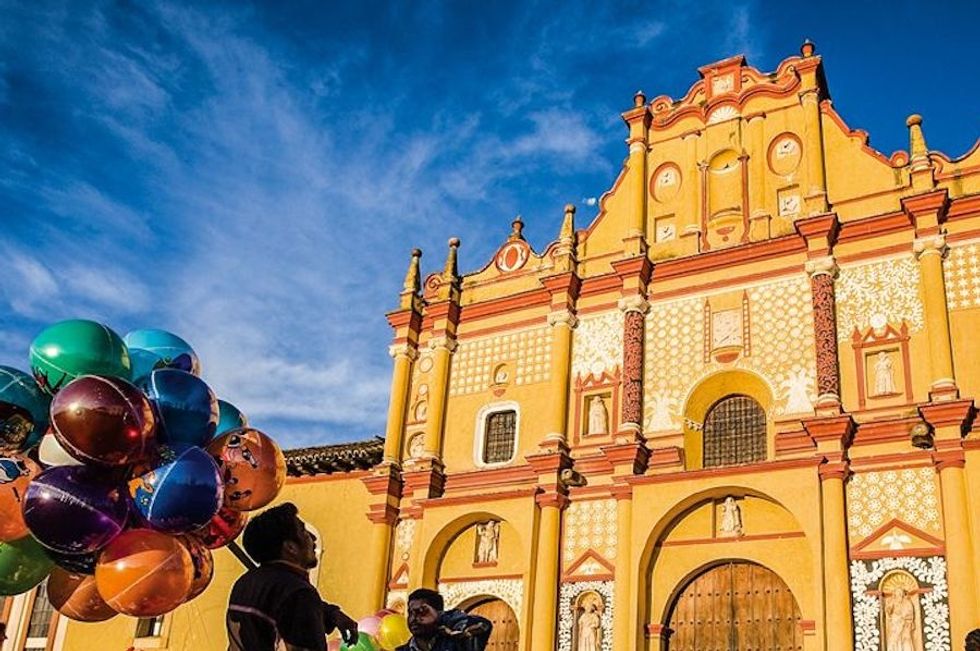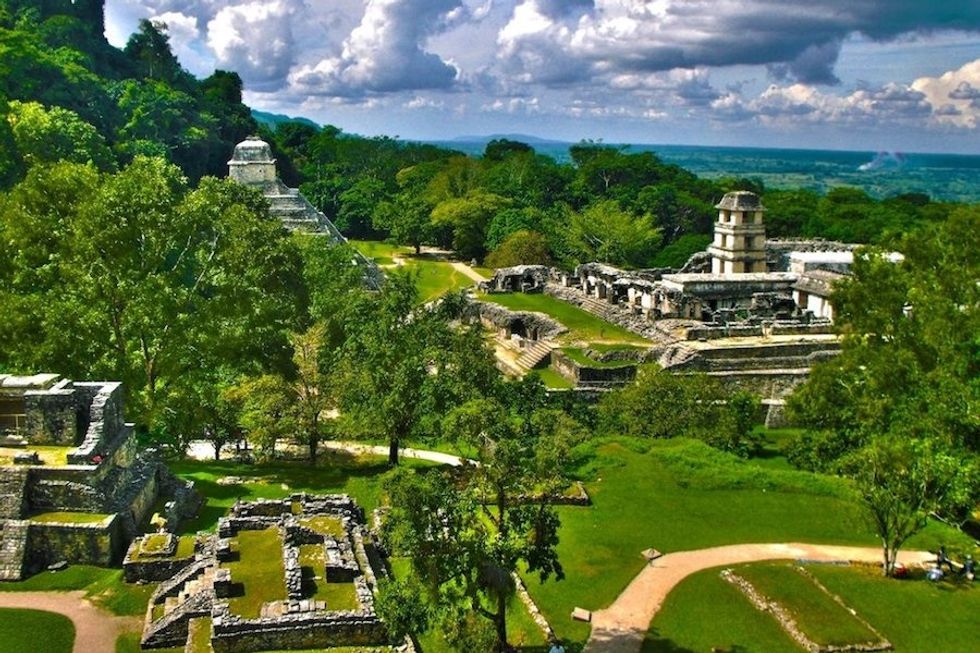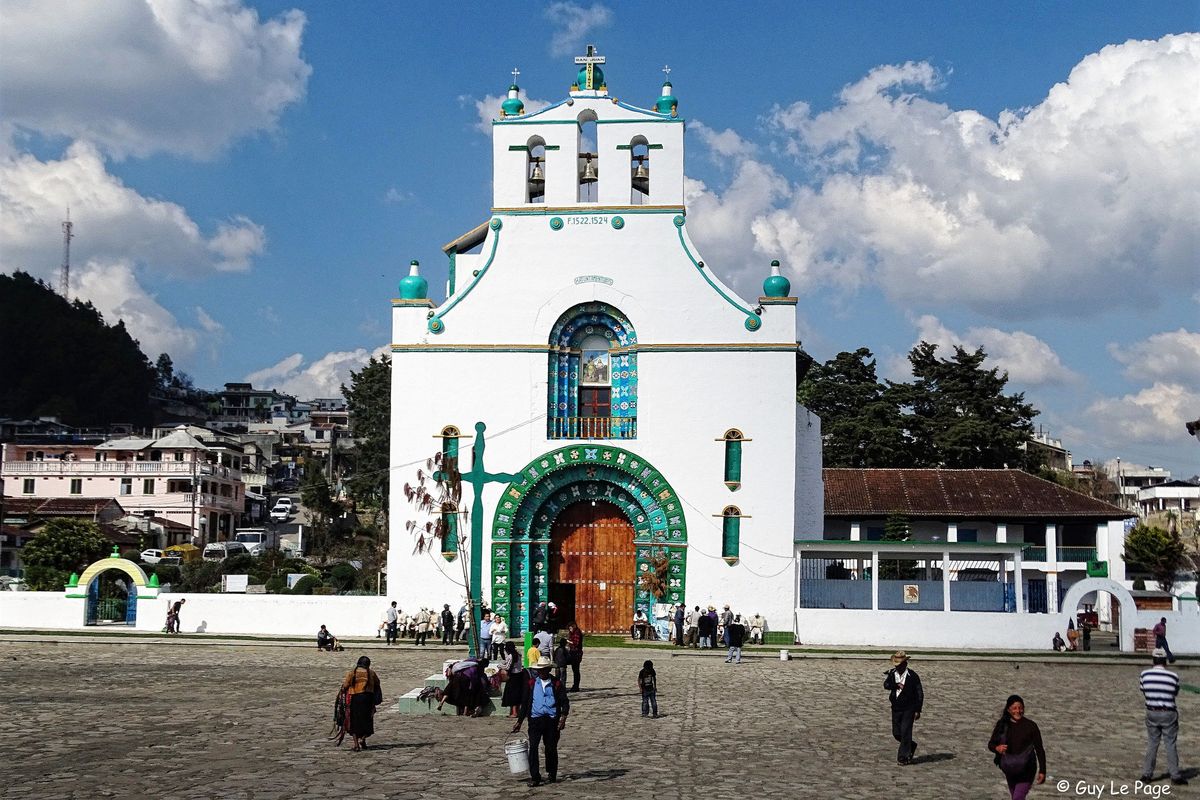Home to dense jungles, towering waterfalls, 16th century colonial cities with modern amenities, Mayan ruins, and intact native cultures, Chiapas is on the verge of becoming Mexico's hottest travel destination.
Situated just north of Guatemala, Chiapas is Mexico's southernmost state. Its tropical climate, deep culture, and recent improvements to its infrastructure make it a destination to put at the top of your list—especially if you've been-there-done-that in Oaxaca and Tulum.
So if you're tired of friends telling you that you should have seen Sayulita, Puerto Vallarta, San Miguel de Allende, or Cabo before they all got popular, you'll want to head to Chiapas sooner rather than later to avoid the inevitable coming of the hordes of tourists, chain restaurants, and timeshare salespeople.
Whether you're into adventure travel or modern luxury, here's why you should move Chiapas to the top of your bucket list.
San Cristobal de las Casas

The Catedral in San Cristobal de las Casas.
(Courtesy of mexicodesconocido.com)
Mexico's Tourism Board designates certain towns as Pueblos Magicos, and San Cristobal is considered to be the most magical of all. Though the city is located in the tropics at an elevation 7,200 feet, San Cristobal remains a green, comfortable oasis year round.
Founded by the Spanish in 1528, many of the city's colonial-style courtyard haciendas have been renovated into upscale restaurants, bars, and boutiques that range from old world charm to modern elegance. The Plaza San Agustin is a world-class dining and browsing space brimming with coffee shops, craft cocktails, international cuisine, and art galleries. Extra bonus: Luxurious spa hotels here come with WTF low prices—for a mere $150 a night, you can reserve the master suite in the plush, authentically styled Guayaba Inn Hotel.
You can easily spend a few days strolling along the city's three andadores, pedestrian-only walkways, popping into places such as The Café Bar Revolución, a gastropub with live music nightly; the Miura Restaurant, which takes an innovative approach to traditional Spanish cooking; and Bazarte, where traditional textiles are artfully integrated into unique bags, luggage, and shoes.
Walk to Na Balom, a rambling former monastery that was resurrected in the 1950s by Danish archaeologist Frans Blom and Swiss conservationist photographer Gertrude Duby. The couple were struck by the natural beauty of the area and its native Lacondon inhabitants, and created a nonprofit to help preserve their cultural heritage by working on sustainable development projects. Na Bolom functions as a research center and is open to the public as a museum and botanical garden—and occasionally as a hotel and restaurant. The combination of native artifacts, indigenous garden, and a new generation researchers all wrapped within the walls of the ancient Catholic sanctuary gives the place a well deserved vibe of timeless peace and beauty.
Plan to get lost for hours in the bustling labyrinth of vendors from nearby villages at Mercado Municipal, where you can shop a kaleidoscope of clothing, produce, prepared foods, live animals, religious items, and medicinal herbs. For more focused browsing, look for the smaller, adjacent markets specializing in crafts, sweets and jewelry.
In need of some detox? Try a temazcal, the therapeutic and spiritual ancient Mayan ritual performed by a shaman in a igloo-like stone hut. Volcanic rocks called abuelitas (little grandmothers) are used to heat the space to hot-hot-hot. You'll sweat it out as herb-infused water is poured onto the rocks while the shaman chants and keeps time with a drum. The shaman may also massage or use a fan to focus the steam to a particular part of your body. Hotels including Casa de Los Arcangeles and the Puerta Vieja Hostel offer the service.Day Trips

The ancient Mayan site of Palenque.
(Wikimedia Commons)
San Cristobal de las Casas is the perfect base for day-trip exploration.
San Juan Chamula
This otherworldly town just six miles from San Cristobal is home to the Tzotzil Indians, who maintain their traditional dress and customs. The cultural and religious heart of town is the Iglesia de San Juan, which combines Mayan and Catholic ceremonial practices. Lacking pews or a pulpit, the open floor is covered daily in a fresh layer of pine needles. A haze of incense fills the air as families sit in small groups, quietly praying and chanting in front of the candles and religious artifacts they've brought. Local custom encourages belching, which releases evil spirits, so worshippers chug regularly from bottles of Coca Cola and Fanta to get things moving. Some also sip pox (pronounced pōsh), a locally distilled aguardiente made from sugar cane, corn, and wheat. In Tzotzil, pox translates to medicine or cure. Note that is strictly forbidden to take photos in the church.
Palenque
Between the 8th and the 10th century AD, this Mayan site was a thriving city of about 30,000 people. But it was abandoned, then swallowed up by the jungle, centuries before the Spanish arrived. Daily tour buses from San Cristobal take passengers to the ruins, returning late at night. But if you have the time, stay overnight, either in the modern town of Palenque or, better yet, at a jungle hotel closer to the ruins.
If possible, make a dinner reservation at the family-run Bajlum Restaurant, next to Hotel La Aldea, along the road to the ruins. The menu is pre-Hispanic fusion, and the chef uses many of the same locally grown and foraged ingredients as the ancient Mayans, including wild boar, turkey, pheasant, venison, rabbit, and quail.
Take a collectivo or taxi to the ruins first thing in the morning, before the day heats up. Wear a hat, and be sure to hire a local guide for both the ruins and the extra jungle tour. These highly educated experts will not only explain the otherwise indecipherable symbols and architectural significance of the ruins, they can lead you to areas of the complex you wouldn't find on your own, including a recently uncovered swimming pool and the Forgotten Temple, which is hidden in the jungle. The excavated temples make up a relatively small part of the sprawling site, and unlike some other pre-Hispanic ruins in Mexico, you are free to climb and explore on your own. Wherever you go, expect to be serenaded by tropical birds and surrounded by the throaty roars by of howler monkeys.
Cascada de Misol-Ha
This Instagram-worthy waterfall free-falls more than 100 feet into a clear pool surrounded by lush tropical vegetation. You can swim in the water, but if you are headed to Agua Azul, you may prefer to swim there instead, as the current at Misol-Ha can be strong after it rains. Take the short, misty trail for a refreshing walk behind the waterfall. Farther along, you'll find a cave at the end of the path. There are eco-cabins onsite and a nearby restaurant if you choose to linger overnight.
Cascadas de Agua Azul
Frothy and luminescent waterfalls connect a series of naturally occurring infinity pools that step down this portion of the Xanil River. Limestone and other minerals cause the water to reflect an intensely bright blue, hence the name Agua Azul. After taking a dip in one of the designated swimming spots, dry off and nosh on tlayudas and coco locos from one of dozens of simple stands lining the river. You'll find a few places to stay and some casual open-air restaurants in the area, but most visitors spend just a few hours here, as part of a bus tour from San Cristobal that also includes a stop at Misol-Ha.
Miradores Canon del Sumidero
Take a boat trip down this portion of the Grijalva River, which slices through a canyon where sheer rock walls rise 3,000 feet on either side. Glide past flocks of herons and cormorants while river crocodiles catch a few rays on the banks and spider monkeys scamper through tropical trees ensconced with bromeliads. You can also enjoy a different view from a drive along the top of the canyon, though with low guardrails along the road, it's a more intense experience than the boat trip.
Chiapas Travel Tips
Here's a handful of things to know before you go.
Tuxtla Gutierrez International Airport (aka Ángel Albino Corzo International Airport) is about 50 miles from San Cristobal. Shuttles and other buses are available, or you can just grab a taxi, which is about the same price as taking one from the heart of San Francisco to SFO.
Although Chiapas is Mexico's poorest state, it's also one of the safest. And, as a whole, Mexico is as dangerous as countries such as Germany, Denmark, the UK, and Belgium.
Since there are fewer American tourists in Chiapas than in other states, there are also fewer locals who speak English. But you'll do fine with toddler-level Spanish. If you haven't yet reached the proficiency level of a two-year old—and even if you have—download Google Translate to your smart phone and carry a small pad of paper and pen to help communicate money amounts and destinations. Also, look for full-service travel agencies in San Cristobal that can get you to nearby sights.
Both Agua Azul and Miso-Ha lie along the road to Palenque; you can reach all three in a single trip.





















